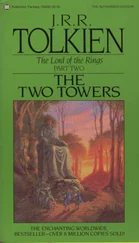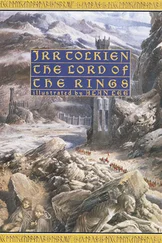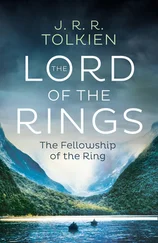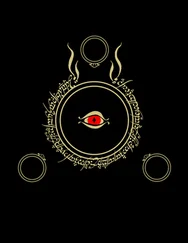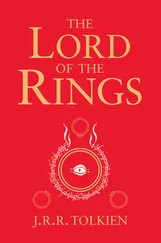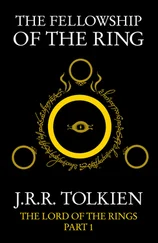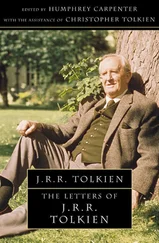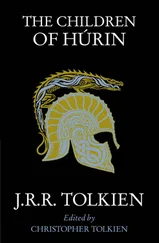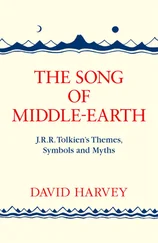He walked also among the great pine-trees on the highland of Dorthonion (‘Land of Pines’), which afterwards came to be called Taur-nu-Fuin, ‘the Forest under Night’, when Morgoth turned it into ‘a region of dread and dark enchantment, of wandering and despair’ ( †); and he came to Neldoreth, the northern forest of Doriath, realm of Thingol.
It was in Beleriand and the lands to the north that Túrin’s terrible destiny was played out; and indeed both Dorthonion and Doriath where Treebeard walked were crucial in his life. He was born into a world of warfare, though he was still a child when the last and greatest battle in the wars of Beleriand was fought. A very brief sketch of how this came about will answer questions that arise and references that are made in the course of the narrative.
In the north the boundaries of Beleriand seem to have been formed by the Ered Wethrin, the Mountains of Shadow, beyond which lay Húrin’s country, Dor-lómin, a part of Hithlum; while in the east Beleriand extended to the feet of the Blue Mountains. Further east lay lands that scarcely appear in the history of the Elder Days; but the peoples that shaped that history came out of the east by the passes of the Blue Mountains.
The Elves appeared on earth far off in the distant east, beside a lake that was named Cuiviénen, Water of Awakening; and thence they were summoned by the Valar to leave Middle-earth, and passing over the Great Sea to come to the ‘Blessed Realm’ of Aman in the west of the world, the land of the Gods. Those who accepted the summons were led on a great march across Middle-earth from Cuiviénen by the Vala Oromë, the Hunter, and they are called the Eldar, the Elves of the Great Journey, the High Elves: distinct from those who, refusing the summons, chose Middle-earth for their land and their destiny. They are the ‘lesser Elves’, called Avari, the Unwilling.
But not all the Eldar, though they had crossed the Blue Mountains, departed over the Sea; and those who remained in Beleriand are named the Sindar, the Grey Elves. Their high king was Thingol (which means ‘Grey-cloak’), who ruled from Menegroth, the Thousand Caves in Doriath. And not all the Eldar who crossed the Great Sea remained in the land of the Valar; for one of their great kindreds, the Noldor (the ‘Loremasters’), returned to Middle-earth, and they are called the Exiles. The prime mover in their rebellion against the Valar was Fëanor, ‘Spirit of Fire’: he was the eldest son of Finwë, who had led the host of the Noldor from Cuiviénen, but was now dead. This cardinal event in the history of the Elves was thus briefly conveyed by my father in Appendix A to The Lord of the Rings :
Fëanor was the greatest of the Eldar in arts and lore, but also the proudest and most selfwilled. He wrought the Three Jewels, the Silmarilli , and filled them with the radiance of the Two Trees, Telperion and Laurelin, that gave light to the land of the Valar. The Jewels were coveted by Morgoth the Enemy, who stole them and, after destroying the Trees, took them to Middle-earth, and guarded them in his great fortress of Thangorodrim [the mountains above Angband]. Against the will of the Valar Fëanor forsook the Blessed Realm and went in exile to Middle-earth, leading with him a great part of his people; for in his pride he purposed to recover the Jewels from Morgoth by force. Thereafter followed the hopeless war of the Eldar and the Edain against Thangorodrim, in which they were at last utterly defeated.
Fëanor was slain in battle soon after the return of the Noldor to Middle-earth, and his seven sons held wide lands in the east of Beleriand, between Dorthonion (Taur-nu-Fuin) and the Blue Mountains; but their power was destroyed in the terrible Battle of Unnumbered Tears which is described in The Children of Húrin , and thereafter ‘the Sons of Fëanor wandered as leaves before the wind’ ( †).
The second son of Finwë was Fingolfin (the half-brother of Fëanor), who was held the overlord of all the Noldor; and he with his son Fingon ruled Hithlum, which lay to the north and west of the great chain of Ered Wethrin, the Mountains of Shadow. Fingolfin dwelt in Mithrim, by the great lake of that name, while Fingon held Dor-lómin in the south of Hithlum. Their chief fortress was Barad Eithel (the Tower of the Well) at Eithel Sirion (Sirion’s Well), where the river Sirion rose in the east face of the Mountains of Shadow: Sador, the old crippled servant of Húrin and Morwen, served as a soldier there for many years, as he told Túrin ( †). After Fingolfin’s death in single combat with Morgoth Fingon became the High King of the Noldor in his stead. Túrin saw him once, when he ‘and many of his lords had ridden through Dor-lómin and passed over the bridge of Nen Lalaith, glittering in silver and white’ ( †).
The second son of Fingolfin was Turgon. He dwelt at first, after the return of the Noldor, in the house named Vinyamar, beside the sea in the region of Nevrast, west of Dor-lómin; but he built in secret the hidden city of Gondolin, which stood on a hill in the midst of the plain called Tumladen, wholly surrounded by the Encircling Mountains, east of the river Sirion. When Gondolin was built, after many years of labour, Turgon removed from Vinyamar and dwelt with his people, both Noldor and Sindar, in Gondolin; and for centuries this Elvish redoubt of great beauty was preserved in the most profound secrecy, its only entry undiscoverable and heavily guarded, so that no stranger could ever pass in; and Morgoth was unable to learn where it lay. Not until the Battle of Unnumbered Tears, when more than three hundred and fifty years had passed since he left Vinyamar, did Turgon emerge with his great army from Gondolin.
The third son of Finwë, the brother of Fingolfin and half-brother of Fëanor, was Finarfin. He did not return to Middle-earth, but his sons and daughter came with the host of Fingolfin and his sons. The eldest son of Finarfin was Finrod, who, inspired by the magnificence and beauty of Menegroth in Doriath, founded the underground fortress-city of Nargothrond, for which he was named Felagund, interpreted to mean ‘Lord of Caves’ or ‘Cave-hewer’ in the tongue of the Dwarves. The doors of Nargothrond opened onto the gorge of the river Narog in West Beleriand, where that river passed through the high hills called Taur-en-Faroth, or the High Faroth; but Finrod’s realm extended far and wide, east to the river Sirion, and west to the river Nenning that reached the sea at the haven of Eglarest. But Finrod was slain in the dungeons of Sauron, chief servant of Morgoth, and Orodreth, the second son of Finarfin, took the crown of Nargothrond: this took place in the year following the birth of Túrin in Dor-lómin.
The other sons of Finarfin, Angrod and Aegnor, vassals of their brother Finrod, dwelt on Dorthonion, looking northwards over the vast plain of Ard-galen. Galadriel, Finrod’s sister, dwelt long in Doriath with Melian the Queen. Melian was a Maia, a spirit of great power who took human form and dwelt in the forests of Beleriand with King Thingol: she was the mother of Lúthien, and the foremother of Elrond. Not long before the return of the Noldor from Aman, when great armies out of Angband came south into Beleriand, Melian (in the words of The Silmarillion ) ‘put forth her power and fenced all that dominion [the forests of Neldoreth and Region] round about with an unseen wall of shadow and bewilderment: the Girdle of Melian, that none thereafter could pass against her will or the will of King Thingol, unless one should come with a power greater than that of Melian the Maia.’ Thereafter the land was named Doriath, ‘the Land of the Fence’.
In the sixtieth year after the return of the Noldor, ending many years of peace, a great host of Orcs came down from Angband, but was utterly defeated and destroyed by the Noldor. This was called Dagor Aglareb , the Glorious Battle; but the Elvish lords took warning from it, and set the Siege of Angband, which lasted for almost four hundred years.
Читать дальше
Конец ознакомительного отрывка
Купить книгу

